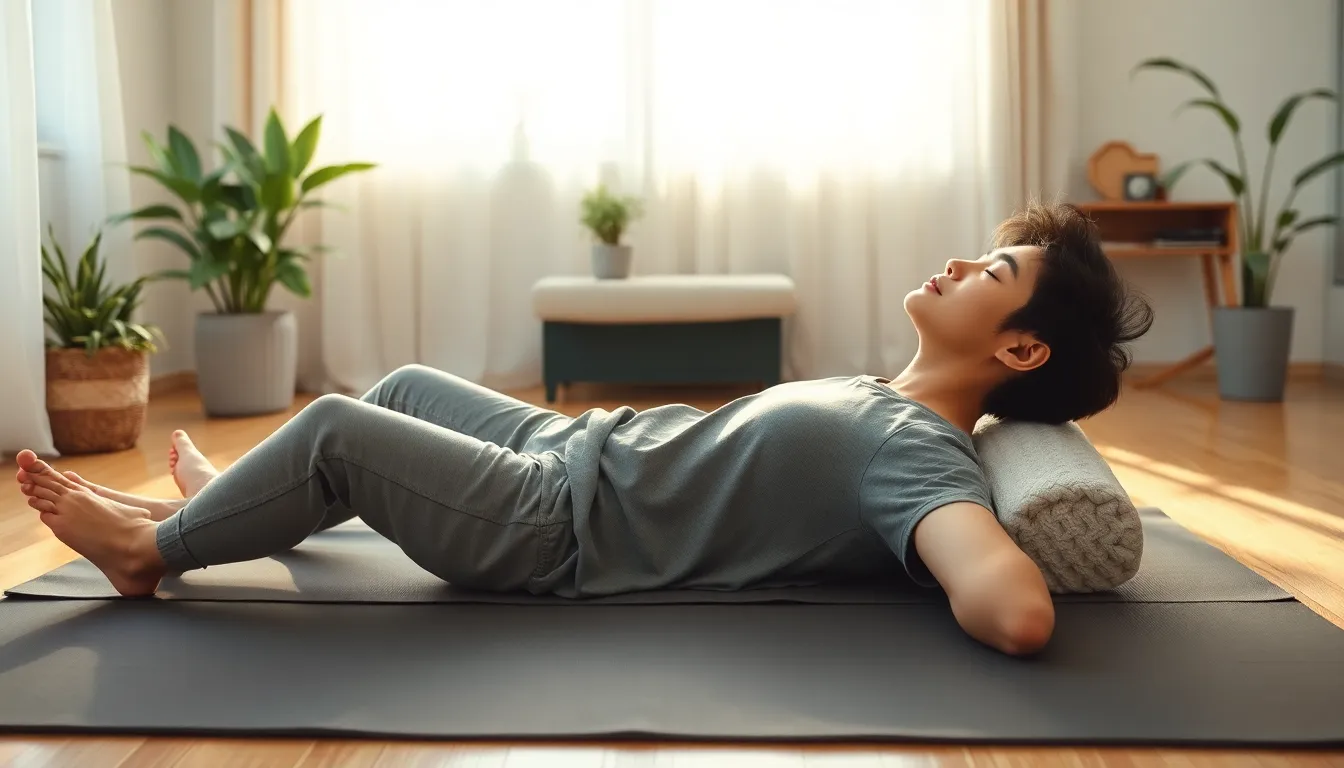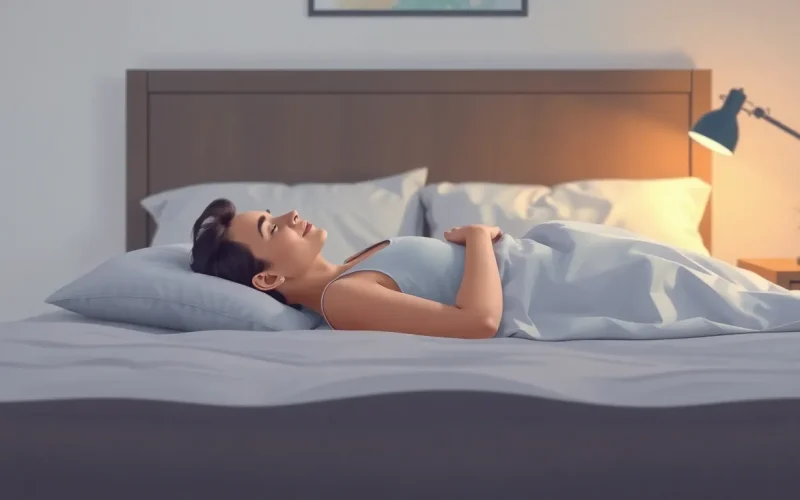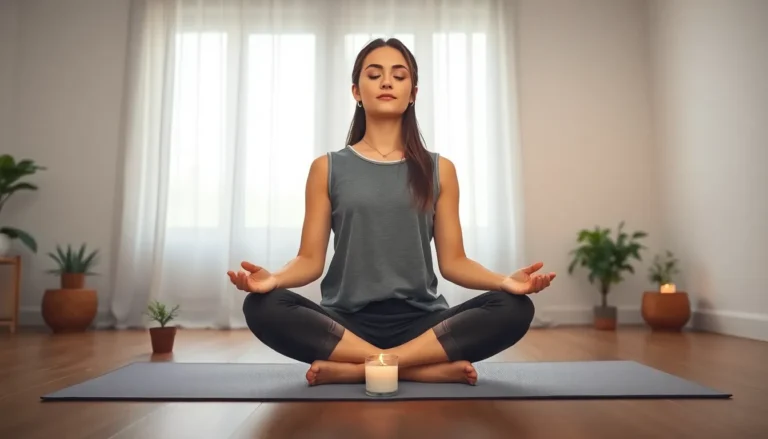Table of Contents
ToggleStruggling to catch those elusive Z’s? You’re not alone. Millions toss and turn each night, battling the sleep-stealing gremlins that keep them awake. Enter the body scan for sleep—a simple yet powerful technique that’s like a lullaby for your mind and body.
What Is a Body Scan for Sleep?
A body scan for sleep is a mindfulness practice designed to promote relaxation and enhance sleep quality. This technique involves focusing attention on different parts of the body, starting from the toes and moving up to the head. Practitioners systematically relax each body area, encouraging a connection between the mind and body.
During a body scan, individuals typically lie down comfortably, close their eyes, and take deep breaths. This breathing technique helps to clear the mind of distractions, making it easier to concentrate on bodily sensations. He or she guides their awareness through the body, noticing areas of tension and deliberately relaxing them.
Utilizing a body scan before bedtime can significantly reduce anxiety levels and stress, two common barriers to falling asleep. Research indicates that mindfulness practices, including body scans, decrease cortisol levels, a hormone associated with stress. Additionally, studies show improvements in sleep quality using this technique among individuals with insomnia.
Here’s a simple outline of a typical body scan practice:
- Find a quiet space: Choose a comfortable position in a calm environment.
- Set an intention: Focus on relaxation and letting go of tension.
- Begin with the toes: Notice sensations and relax them.
- Move upward: Progressively focus on each part: feet, legs, abdomen, chest, arms, shoulders, neck, and face.
- Conclude: Take a few deep breaths and gradually return to the present moment.
A body scan for sleep serves as an effective tool for calming the mind, providing a pathway to restful sleep. By incorporating this practice into a nightly routine, individuals experience improved relaxation and enhanced overall sleep health.
Benefits of Body Scan for Sleep

Body scan for sleep offers numerous advantages, particularly in promoting mental and physical well-being. Practitioners often notice improvements in anxiety levels, relaxation, and overall sleep quality.
Reducing Anxiety
Body scan techniques effectively reduce anxiety by fostering a state of mindfulness. Practitioners learn to focus on their breath and bodily sensations, which diverts attention away from racing thoughts. By directing awareness to each body part, individuals release tension and create a calming atmosphere. Research indicates that this mindful approach lowers cortisol levels, a primary stress hormone, ultimately helping reduce symptoms of anxiety. Regular practice can enhance emotional resilience, equipping individuals with tools to manage anxiety more effectively at bedtime.
Promoting Relaxation
Body scan for sleep significantly promotes relaxation throughout the body. This method involves a step-by-step focus on individual body parts, encouraging the release of physical tension. As practitioners systematically relax each area, they experience heightened awareness and relief from discomfort. The process stimulates the parasympathetic nervous system, initiating a relaxation response that prepares the body for sleep. Research shows that individuals who incorporate body scans into their nightly routines report feeling calmer and more at ease, making it easier to fall asleep and improve sleep quality.
How to Perform a Body Scan for Sleep
Performing a body scan for sleep involves a few simple steps to enhance relaxation and promote restful sleep.
Step-by-Step Instructions
- Lie Down Comfortably: Find a quiet space, lying flat on your back. Keep hands relaxed at your sides.
- Close Your Eyes: Close your eyes to minimize distractions, allowing for a focused experience.
- Breathe Deeply: Take slow, deep breaths. Inhale through the nose and exhale through the mouth.
- Focus on Each Body Part: Start with the toes, gradually moving up to the head. Notice sensations, tension, and relaxation in each area.
- Release Tension: As attention shifts to each body part, consciously relax it. Visualize warmth and heaviness in each area.
- Maintain Awareness: If thoughts arise, gently redirect focus to the breath or a body part.
Tips for Success
- Consistency: Practice nightly for better results in sleep quality.
- Create a Ritual: Establish a calming pre-sleep routine, such as dimming lights or playing soft music.
- Use Guided Audio: Consider using guided body scan recordings for additional support and structure.
- Stay Patient: If distractions occur, acknowledge them and return focus to the body scan. Regular practice helps improve the experience.
- Set an Intention: Before starting, set a clear intention for relaxation and restful sleep. This enhances the effectiveness of the practice.
Incorporating Body Scan into Your Sleep Routine
Incorporating a body scan into a nightly sleep routine enhances relaxation and promotes better sleep quality. Practitioners can follow these steps to effectively integrate this mindfulness technique.
- Designate a Quiet Space: Choose a calming environment free from distractions. This setting allows for uninterrupted practice and a lower likelihood of disturbances.
- Set an Intention for Relaxation: Prioritize a specific goal for the session, such as releasing tension or calming the mind. A clear intention reinforces the focus during the practice and enhances its effectiveness.
- Lie Down Comfortably: Position the body in a relaxed state, typically on the back, with arms and legs extended comfortably. This posture helps signal the body that it’s time to unwind and prepare for sleep.
- Practice Deep Breathing: Inhale deeply through the nose, filling the lungs, then exhale slowly. Slow, controlled breaths help initiate relaxation and clear the mind of racing thoughts.
- Focus on Each Body Part: Sequentially bring attention to different body areas, starting from the toes and working towards the head. Notice sensations in each part and consciously relax any tension present.
- Release Tension: As attention shifts, visualize tension melting away. This mental practice reinforces the connection between the mind and body, facilitating overall relaxation.
- Consistent Practice: Engage in this routine nightly to build familiarity and enhance its effectiveness over time. Consistency fosters better outcomes, improving overall sleep quality.
- Utilize Guided Audio: For those new to the practice, listening to guided body scan recordings can provide structure and support. These resources lead practitioners through the process, making it easier to stay focused.
By following these steps, individuals can seamlessly incorporate body scans into their sleep routines, resulting in improved relaxation and enhanced sleep health.
Embracing a body scan for sleep can transform nighttime routines and significantly enhance overall sleep quality. By focusing on relaxation and mindfulness, individuals can effectively combat anxiety and stress that often hinder restful sleep. The simplicity of this practice makes it accessible to anyone seeking better sleep health.
Incorporating the body scan into a nightly ritual encourages a deeper connection with the body and promotes a sense of calm. With consistent practice, individuals are likely to notice improvements in their ability to fall asleep and experience more restorative rest. This technique not only fosters relaxation but also supports mental and physical well-being, making it a valuable addition to any sleep strategy.




